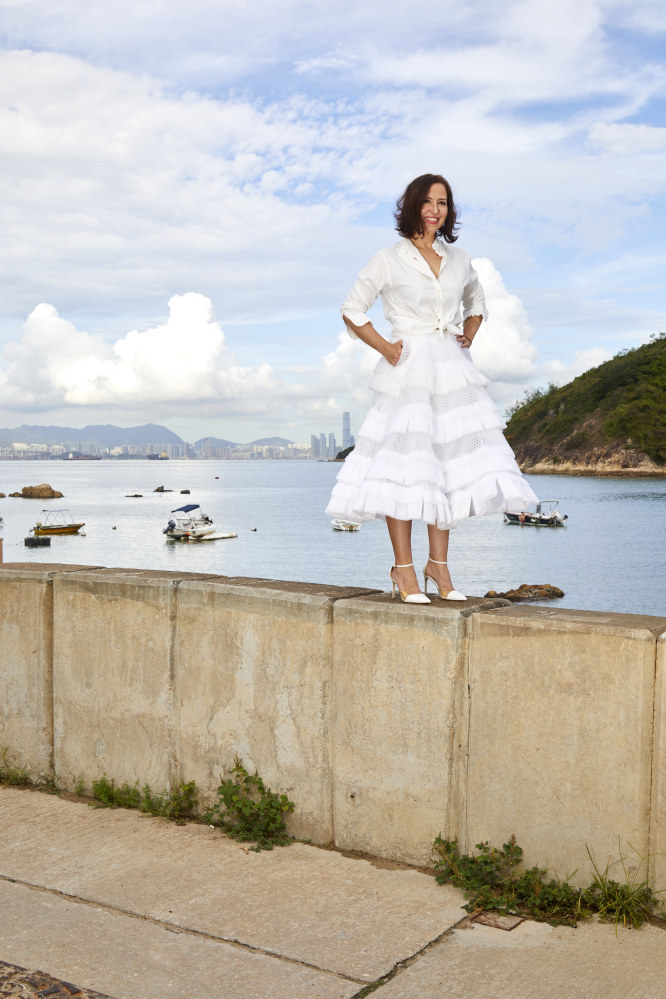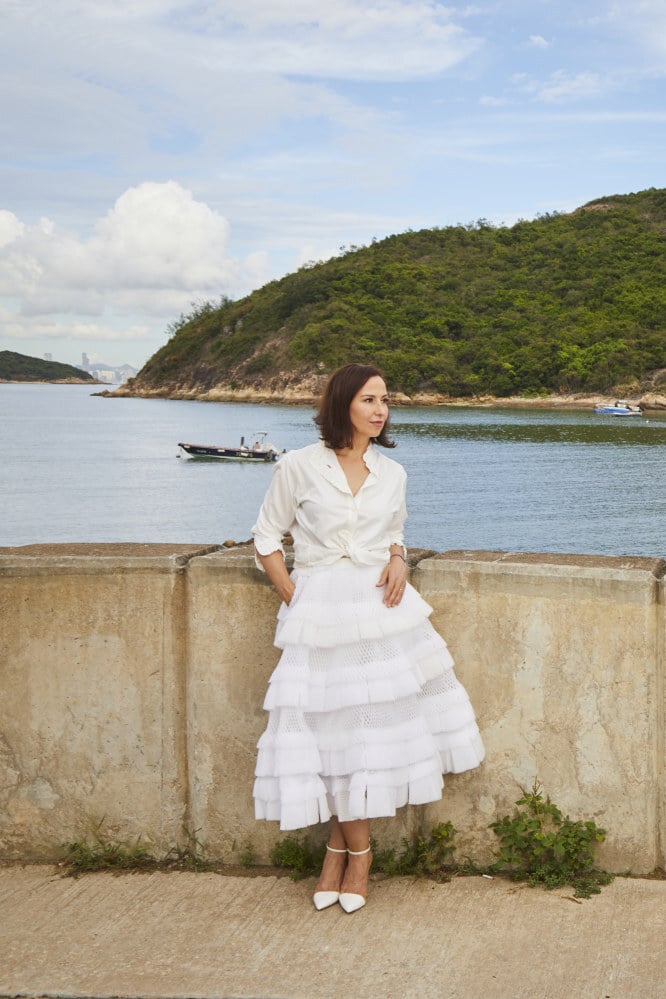
Woman who hasn’t bought new clothes in four years has no regrets as she looks in horror at ultra fast fashion’s rise
- Environmental activist Tanja Wessels’ year-long experiment in only wearing second-hand clothes has now lasted four years. It has changed her whole outlook
- We need to break the stigma surrounding pre-worn clothing, she says, and realise that the party dress we’re looking for is already in the closet
Born to South African parents who were diplomats and travelled the world, Tanja Wessels studied filmmaking and art in Lisbon, in Portugal, and London before heading to Asia in 2006. She talks to Kylie Knott about her passion for environmentalism and sustainable fashion.
Tell me a bit about yourself and your eco journey
As someone who spent most of her childhood eating dirt and climbing trees, the value of nature was always very clear to me. From leaves to lizards, flowers to foxes, we are all connected.

Is it true you have not bought any new clothes for four years?
I gave myself one year of only wearing second-hand clothing. I shared that on social media and was taken aback by the responses – good and bad! Four years on, it has become a way of life. I have not bought new clothing since 2017. I could never have anticipated how it would change my life. It has shifted the way I look at the world.
Can sustainable fashion be more affordable? Experts weigh in
You use art and fashion to send environmental messages – how does this work?
From childhood, we are taught to seek approval from outside – adults, educational systems … later in life, media plays a stronger role in that dynamic of feeling valued and loved, and spending money on products to make us feel seen and heard becomes so normal, we don’t even question it.
This is a perfect recipe to sell stuff and make a handful of people extremely wealthy at the expense of people and planet. I’ve long wished to rewrite this script. One way to do that is with the tools that got us into this conundrum: media and visual culture.
Creating images that look like familiar advertising language, but sell the opposite message: no, you don’t need another dress to feel “party ready”. The one you’ve had in your wardrobe for 10 years is the “perfect dress”. Why? Because you are in it.

What advice can you share with people on how to be a more sustainable consumer?
If this sounds like too much overhead, consider not making the purchase at all. Anything that exists in this world took resources to produce, no matter how sustainable it is. The most sustainable option of all is to buy less.

You are an advocate of preloved clothes but buying second-hand is looked down upon in some parts of the world. How can we break that stigma?
Question why we have that stigma and rebel against it. For many, it comes from an innocent place, for example, being concerned about hygiene. However, when that is explored a little, it becomes apparent that a gentle wash can address that.
People would be surprised to learn that many new garments get piled up on warehouse and shop floors. Many textiles use toxic chemicals which are harmful to our health.
A fast fashion horror story that should pummel your conscience
We are living in times that ask us to step outside assumptions and outdated thinking. I touched on some of these topics in a TEDxTinHauWomen talk I did last year. Many people were shocked by what they heard.
Second-hand needs a massive re-branding moment and that is something we can do by making it normal and cool (which it absolutely is).

If you can walk into The Salvation Army and can find an outfit that gets people talking, you are a fashion champ! That takes way more creativity and personality than scrolling online and having it delivered to your house. Getting confident in who you are and wearing clothes, instead of them wearing you, and instead of being a slave to brands, is where the real magic lives.
You said goodbye to Hong Kong in December. What’s the next chapter for you, especially on the topic of eco fashion and sustainability?
I’m relocating to Penang, Malaysia for two years. My business partner Cristina Kountiou has recently left Hong Kong for Singapore, so we will be developing our creative sustainable start-up, Agile Hart, there.
I hope to take all the energy, learning and community I fostered in Hong Kong and sprinkle that around that part of the world. I’m curious to get into the digital side of sustainable fashion and to learn more about where the metaverse will take us.











